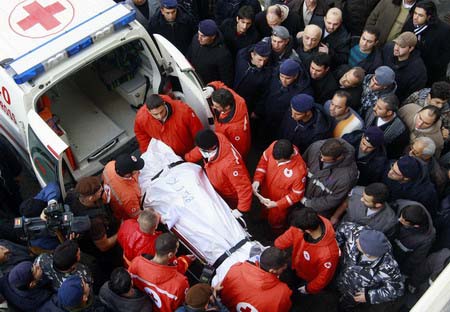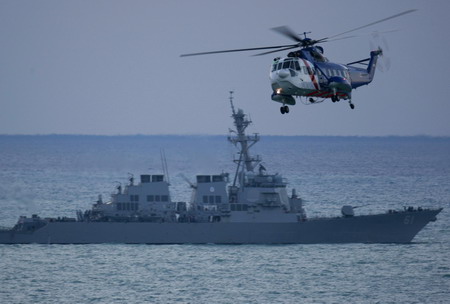Global General
Pilot in Beirut crash made 'fast and strange turn'
(Agencies)
Updated: 2010-01-27 09:12
 |
Large Medium Small |
|
 Red Cross rescuers transport the body of one of the victims of a crashed Ethiopian Airlines plane from an ambulance to a hospital in Beirut January 25, 2010. [Agencies] |
BEIRUT: The pilot of a doomed Ethiopian Airlines flight made a "fast and strange turn" minutes after takeoff from Beirut in a thunderstorm, Lebanon's transportation minister said Tuesday, revealing new clues about the plane's few minutes in flight.
The minister cautioned, however, against making any conclusions about the cause of the crash, saying it was far too early and investigators still need to find the black boxes.
All 90 people on board the plane bound for Ethiopia's capital, Addis Ababa, were feared dead from the crash, which happened at around 2:30 a.m. Monday. A second day of rescue operations using sonar-equipped boats and divers turned up only a few body parts, extinguishing hope of finding any survivors.
Transportation Minister Ghazi Aridi revealed that the plane flew in the opposite direction from the path recommended by the control tower after taking off in stormy weather.
He said the pilot initially followed the tower's guidance, but then abruptly changed course and went in the opposite direction.
"They asked him to correct his path but he did a very fast and strange turn before disappearing completely from the radar," Aridi told The Associated Press.
"Nobody is saying the pilot is to blame for not heeding orders," Aridi said, adding: "There could have been many reasons for what happened. ... Only the black box can tell."
It was not clear why the pilot veered off the recommended path. Like most other airliners, the Boeing 737 is equipped with its own onboard weather radar, which the pilot may have used to avoid flying into thunderheads rather than following the flight tower's recommendation.
Ethiopian Airlines said late Monday that the pilot had more than 20 years of experience.
Rescue teams and equipment sent from the UN and countries that included the United States and Cyprus were searching an area up to six miles (10 kilometers) out to sea. Conditions were chilly but relatively clear Tuesday, far better than Monday, when rain lashed the coast.
|
|
Ethiopian Airlines Chief Executive Girma Wake said the American vessel that the US Navy has dispatched to help in search operation is capable of lifting the plane's fuselage from the water.
"When they lift it up, we hope they will find trapped bodies in the fuselage," Wake told journalists in Addis Ababa.
By mid-afternoon, part of the wreckage and some life rafts were recovered from the area, the airline said.












